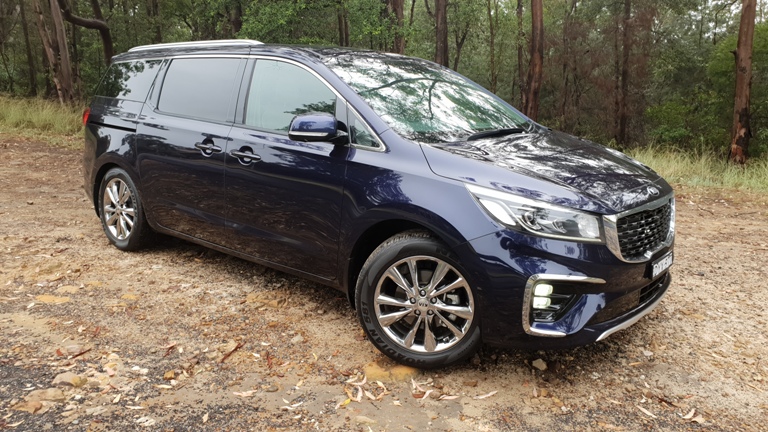Car Sales In Australia Continue To Slide In September
The Federal Chamber of Automotive Industries has released the numbers for new car sales in September 2020. 68,985 new vehicles were sold and that’s a drop of 21.8% compared to last year’s September figures of 88,181. For 2020, 644,891 vehicles have been moved, that’s down 20.5% for 2019’s 811,464.
Ford’s Ranger lead the way with 3,726, heading Toyota’s RAV4 on 2,433, Hyundai’s i30 with 1,786, which just pipped Mazda’s CX-5 on 1,765.On a brand basis it was Toyota on 12,936, Mazda with an even 7,000, Hyundai on 5,723, whilst Kia was nipping at its sister company’s heels at 5,092. Ford was fifth, with the Ranger making up most of the 4,816 sales.
In a category comparison, 17,720 passenger vehicles were sold, for 25.7% of the overall market. 47.3% of new vehicles sold were SUV at 32,647. Light Commercial Vehicles had 22.9% for 15,772 sales. Victoria’s lockdown situation saw 10,447 vehicles sold. That’s a decrease of a whopping 57.7% compared to September 2019. In opposition, the A.C.T, the N.T, and W.A. had increases of 3.4%, 10.6%, and 1.5% respectively.
The Chief Executive of the FCAI, Tony Weber, commented: “First of all, we are seeing COVID-19 health restrictions across Australia, and particularly in metropolitan Melbourne, continue to ease. Another sign that the market may improve is the announcement by the Federal Government last week of an easing of lending conditions for private buyers and small business in Australia.” and added: Freeing up restrictions around financial lending will act as a stimulus for Australian industry.” Mr Weber said.
The numbers reflect thirty months in a row of decreasing sales, affected by exchange rates, economic uncertainty, Covid-19, and other natural disasters. Diesel powered passenger vehicles continued to slide, with 2019’s figures of 6,890 well ahead of 2020’s 4,185. This mirrors the SUV segment with 2019 seeing 86,969 compared to 2020’s 64,009 so far. Electric passenger cars are the opposite, with 701 for 2020 compared to 2019’s 527. A big change has been the SUV hybrid segment, with new models being available and reflected in the 23,173 compared to 2019’s 5,986. In comparison, petrol fed SUVs dropped dramatically, from 270,923 to 225,443.
Diesel powered passenger vehicles continued to slide, with 2019’s figures of 6,890 well ahead of 2020’s 4,185. This mirrors the SUV segment with 2019 seeing 86,969 compared to 2020’s 64,009 so far. Electric passenger cars are the opposite, with 701 for 2020 compared to 2019’s 527. A big change has been the SUV hybrid segment, with new models being available and reflected in the 23,173 compared to 2019’s 5,986. In comparison, petrol fed SUVs dropped dramatically, from 270,923 to 225,443. In the sub-$60K people mover segment, Kia’s Carnival dominated. 237 were sold in September, well ahead of Honda’s Odyssey and LDV’s G10, with 69 and 67 apiece. Above $60K and it’s a two way tussle between Mercedes-Benz and Toyota, with the Granvia’s 22 nudging the German brand’s V-Class and Valente 34 and 27.
In the sub-$60K people mover segment, Kia’s Carnival dominated. 237 were sold in September, well ahead of Honda’s Odyssey and LDV’s G10, with 69 and 67 apiece. Above $60K and it’s a two way tussle between Mercedes-Benz and Toyota, with the Granvia’s 22 nudging the German brand’s V-Class and Valente 34 and 27.
Ford’s Mustang continued its winning ways in the sub-$80K Sports car segment with 145, well ahead of Mazda’s MX-5 (54) with Hyundai’s recently revamped Veloster in hot pursuit on 49. For the over $80K segment, Mercedes-Benz again continued to lead with their E-Class and C-Class duking it out on 97 and 94.
For the sub-$40K small SUV market, it was gold and silver for Korea, with the Kia Seltos finding 1,089 new homes, Hyundai’s Kona into 1,036, and bronze for Mitsubishi’s ASX on 940. For the medium sub-$60K SUVs it was the RAV4 with 2,433 heading the Mazda CX-5 with 1,765. Third place was Hyundai’s Tucson on 1,199.
Toyota also took out the sub-$70K large SUV market with the Prado selling 820, ahead of the Mazda CX-9 at 624 and the Kia Sorento on 569. Toyota’s LandCruiser swamped the Nissan Patrol, with 990 for September over the Patrol’s 190. In the crucial 4×4 pick-up/cab chassis sector it was the Ford Ranger leading the way on 3,454, well ahead of the soon to be updated Toyota HiLux on 2,790, and Mitsubishi’s Triton on 1,234.
In the crucial 4×4 pick-up/cab chassis sector it was the Ford Ranger leading the way on 3,454, well ahead of the soon to be updated Toyota HiLux on 2,790, and Mitsubishi’s Triton on 1,234.